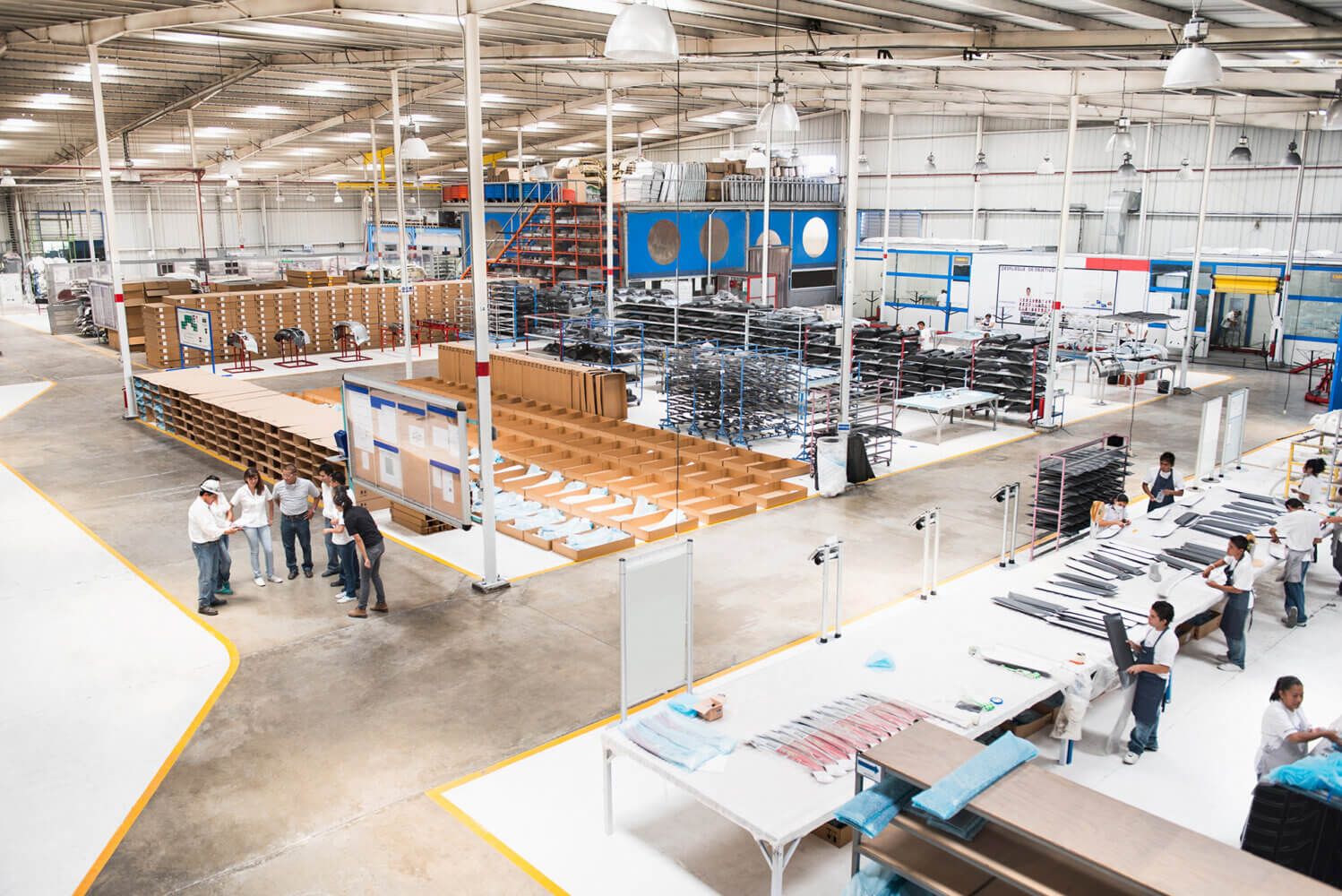
We examine opportunities for investors as nearshoring and significant foreign direct investment feeds a frenzy of activity in Mexico’s industrial real estate market.
Introduction
Mexico’s industrial real estate market is experiencing a surge in growth, driven by the global trend of nearshoring and significant foreign direct investment (FDI). Given the proximity, Mexico has emerged as a preferred destination for companies seeking to establish manufacturing operations with an end consumer in the U.S. However, factors other than geography play to Mexico’s advantage in this space. This article explores the critical reasons behind Mexico’s prominence in the industrial real estate space, its benefits, the potential risks to consider, and a case study highlighting Vesta, a leading player in the sector.
Nearshoring, Reshoring and Mexico’s Surging Foreign Direct Investment
Nearshoring has grown as a popular term for bringing manufacturing operations closer to the U.S. and has re-catalyzed Mexico’s role as a manufacturing hub. Although Mexico is not the only beneficiary or even the largest winner of a global shift away from Chinese manufacturing, incremental gains are significant nonetheless. Those gains resulted in Mexico recently eclipsing China as the U.S.’s largest trading partner.
The geographical proximity of Mexico to the U.S. provides distinct advantages, including reduced shipping times and costs compared to shipping from China. Companies increasingly recognize the benefits of shorter and simpler supply chains, leading them to choose Mexico as a destination for their manufacturing operations.
Mexico Surpassed China as the U.S.’s Largest Manufacturing Trading Partner
Source: Census Bureau
If just 3% of China’s industrial gross leasable area (GLA) were to shift to Mexico, the Mexican industrial market footprint would double. This highlights the potential for further growth and the attractiveness of Mexico as a manufacturing and investment destination. As Mexico grows as a destination of choice for reshoring activity and foreign capital investments, industrial real estate provides investors multi-year visibility into cash flows net of inflation via long-term leases that include annual rent escalators and is agnostic of any one or two particular industries growing faster or slower (i.e., automotive, electronics, etc.).
Mexico has recently experienced a surge in foreign direct investment, with 1H 2023 nearly matching or surpassing the levels seen in the previous nine full calendar years. Much of this growth has been driven by companies with some operations in Mexico today reinvesting and growing their capabilities in the country. Companies are shifting current and future manufacturing dollars away from China as the macro and operating environment become increasingly complex and costly (i.e., deteriorating geopolitical relations, tariffs, and an increasing frequency of outright bans on products). Additionally, Mexico benefits from Chinese companies defending their businesses and moving their operations to Mexico. An estimated 6% of Mexico’s total FDI in 1H 2023 came from Chinese companies, nearly 2x from any prior periods.
This acceleration in FDI demonstrates Mexico’s appeal as a manufacturing and investment destination, attracting capital from both domestic and international sources. China did not become a global manufacturing behemoth overnight; for this reason, we see many years of GLA expansion and rent increases on the horizon for Mexican industrial real estate.
An Educated Workforce and Reduced Shipping Costs
Mexico offers several competitive advantages contributing to its appeal to global manufacturers. The country has a highly skilled labor force, comparable to that of the U.S. and China, but at a fraction of the cost of wages. Mexico’s per capita level of engineering, manufacturing, and construction degrees is twice as high as that of the U.S. or Canada. This skilled workforce and competitive labor cost dynamic make Mexico an enticing option for manufacturers when paired.
Mexico Has Double the Bachelor’s in Engineering, Manufacturing or Construction than the U.S. (% Per Capita)
Source: Santander
As mentioned earlier, the country’s location just south of the U.S. means that shipping times from Mexico to the U.S. market are a small fraction of the time (and cost) of shipping from China. Shipping times are down to days and, in some cases, even hours.
Mexico benefits from a robust infrastructure network, including ports, highways, and rail networks, facilitating the movement of goods and materials. The Mexican government has implemented initiatives to attract foreign investment and support the growth of the industrial sector, such as establishing special economic zones and favorable trade agreements like the United States-Mexico-Canada Agreement (USMCA). These measures provide stability and good conditions for businesses operating in Mexico.
Supply/Demand Imbalance and Rental Rates Favor Mexican Industrial REITS
The growing demand for industrial real estate in Mexico has led to a supply-demand imbalance, widening the gap between existing rents and current market rental rates. Historically, Mexican industrial rental rates were closely tied to CPI growth. However, strong demand for industrial real estate and the current supply have thrown this balance out of whack and led to steep rent increases ranging from 15-30% above existing rates (depending on the region), significantly outpacing inflation. While developers are eager to develop and increase their rental portfolios, external headwinds such as a limited supply of sufficient electricity in some of the most popular regions are slowing their ability to bring new supply online. This presents an opportunity for investors to benefit from capital appreciation and stable rental income streams.
Risks and Considerations
While Mexico’s industrial real estate sector offers tremendous potential, it has risks. As noted, one challenge is the availability of electricity, as most power generation is concentrated in the southern and central parts of the country. In contrast, the most popular destination for manufacturers today is in the northern border region. Mexico has severely under invested in the proper infrastructure to provide the necessary power to fuel the current growth across the country – experts estimate the company needs to add 37GW of capacity and spend US$40Bn in capacity and transmission expansion. Industrial REIT developers are working with the federal, state and local governments to address this mismatch between expected development and electricity production/transmission to ensure enough power is delivered to manufacturers. We also anticipate that building activity will likely shift south into the Bajio and Central regions of the country, as Northern Mexico’s available developable land is nearly saturated and rent prices are nearing parity with cross-border comps.
Additionally, the rapid pace of construction and investment activity may invite the potential for execution risks and project management challenges. Although the high occupancy rate of 98-99% and widespread pre-leasing of projects mitigate the risk of overbuilding, it does little to minimize the risk of poor execution surrounding some projects as developers fight to gain market share and lock in these historic highs in rental rates.
Tenant concentration risk abounds in the Mexican industrial real estate market, suggesting that diversification is crucial for industrial real estate portfolios. The automotive sector constitutes a significant portion of the tenant base, and that will likely continue as electric vehicles (EVs) grow as a percentage of new cars within the global fleet. Still, Mexico’s growing EV production capabilities and companies like Tesla, BMW, Kia, and more establishing facilities for the American market present opportunities for sustained growth. We are monitoring the U.S. Big Three, each of which signed record-breaking labor contracts with the UAW that may further drive auto production to Mexico.
Case Study: Vesta
Unlike its peers, Vesta is a C-Corp versus a traditional FIBRA (Mexican REIT). This allows the company to retain and allocate its profits as it sees fit – maximizing shareholder returns – versus being mandated to distribute X% to shareholders via a dividend like a traditional REIT. The company showcases a well-diversified portfolio, including manufacturers from the auto sector (OEMs and subcomponent manufacturers), electronics, medical supplies, general manufacturing, and logistics providers. Vesta employs a detailed customer selection process, preferring to leave a property empty rather than occupied by a “low-quality” tenant. But as seen in the chart below, its occupancy rates have climbed to the lofty high 90 percentile, on par with high-quality peers like Prologis.
Mexican Industrial Real Estate Occupancy Rate
Sources: Vesta, FIBRA Prologis, FIBRA Macquarie, FIBRA Terrafina
Vesta has begun shifting away from developing individual industrial sites, preferring to develop industrial parks where water, electrical infrastructure, and security costs can be shared among tenants, and development time is reduced compared to the cost of developing multiple independent sites. What we like the most, though, is this is a business that earns more than 80% of its rental income in USD while nearly all of its expenses (ex., Debt) are in MXP$, providing favorable F.X. tailwinds (in a normal environment).
Conclusion
Mexico’s industrial real estate market is thriving, driven by nearshoring, increasing foreign direct investment, and presenting favorable risk/return outcomes for investors. Furthermore, geographical proximity to the U.S. market, attractive labor force dynamics, supportive government posturing, and diversification across industries contribute to Mexico’s appeal. While challenges exist, such as electricity availability and execution risks associated with a change of this magnitude, the market’s high occupancy rate and strategic planning should mitigate these concerns. As the industrial landscape evolves, Mexico’s role as a critical player in the manufacturing sector is expected to strengthen, offering lucrative opportunities for agile investors and businesses.
Discover more about:
More Insights

Thornburg Investment Income Builder Fund – 1st Quarter Update 2025

Taiwan Semi, Tencent, and Other “Quality” Favorites

Investor Spotlight: The Municipal Bond Tax Exemption

Thornburg’s History of Recognition

International Equity: The Power of Global Diversification


